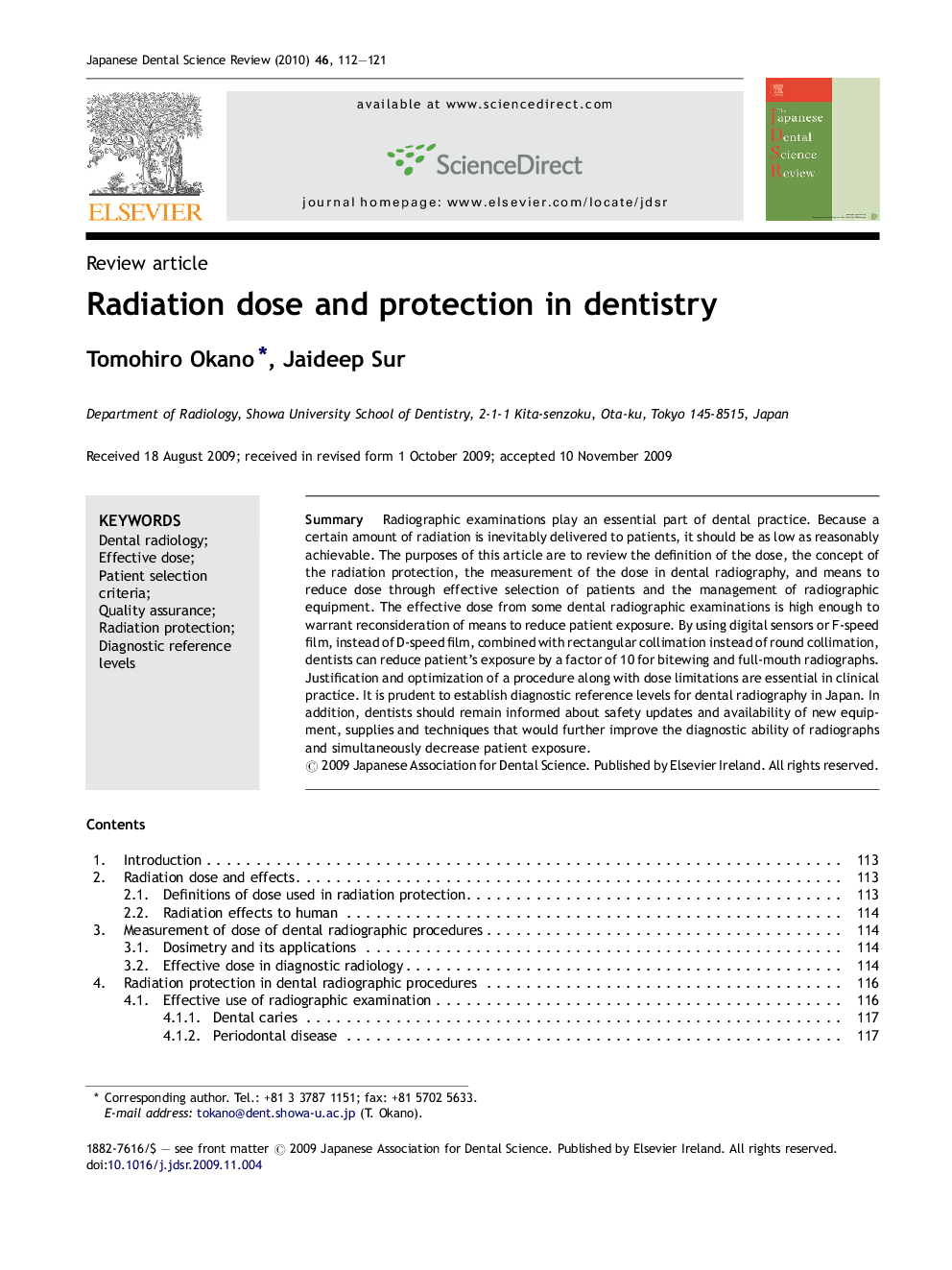| Article ID | Journal | Published Year | Pages | File Type |
|---|---|---|---|---|
| 3136207 | Japanese Dental Science Review | 2010 | 10 Pages |
SummaryRadiographic examinations play an essential part of dental practice. Because a certain amount of radiation is inevitably delivered to patients, it should be as low as reasonably achievable. The purposes of this article are to review the definition of the dose, the concept of the radiation protection, the measurement of the dose in dental radiography, and means to reduce dose through effective selection of patients and the management of radiographic equipment. The effective dose from some dental radiographic examinations is high enough to warrant reconsideration of means to reduce patient exposure. By using digital sensors or F-speed film, instead of D-speed film, combined with rectangular collimation instead of round collimation, dentists can reduce patient's exposure by a factor of 10 for bitewing and full-mouth radiographs. Justification and optimization of a procedure along with dose limitations are essential in clinical practice. It is prudent to establish diagnostic reference levels for dental radiography in Japan. In addition, dentists should remain informed about safety updates and availability of new equipment, supplies and techniques that would further improve the diagnostic ability of radiographs and simultaneously decrease patient exposure.
